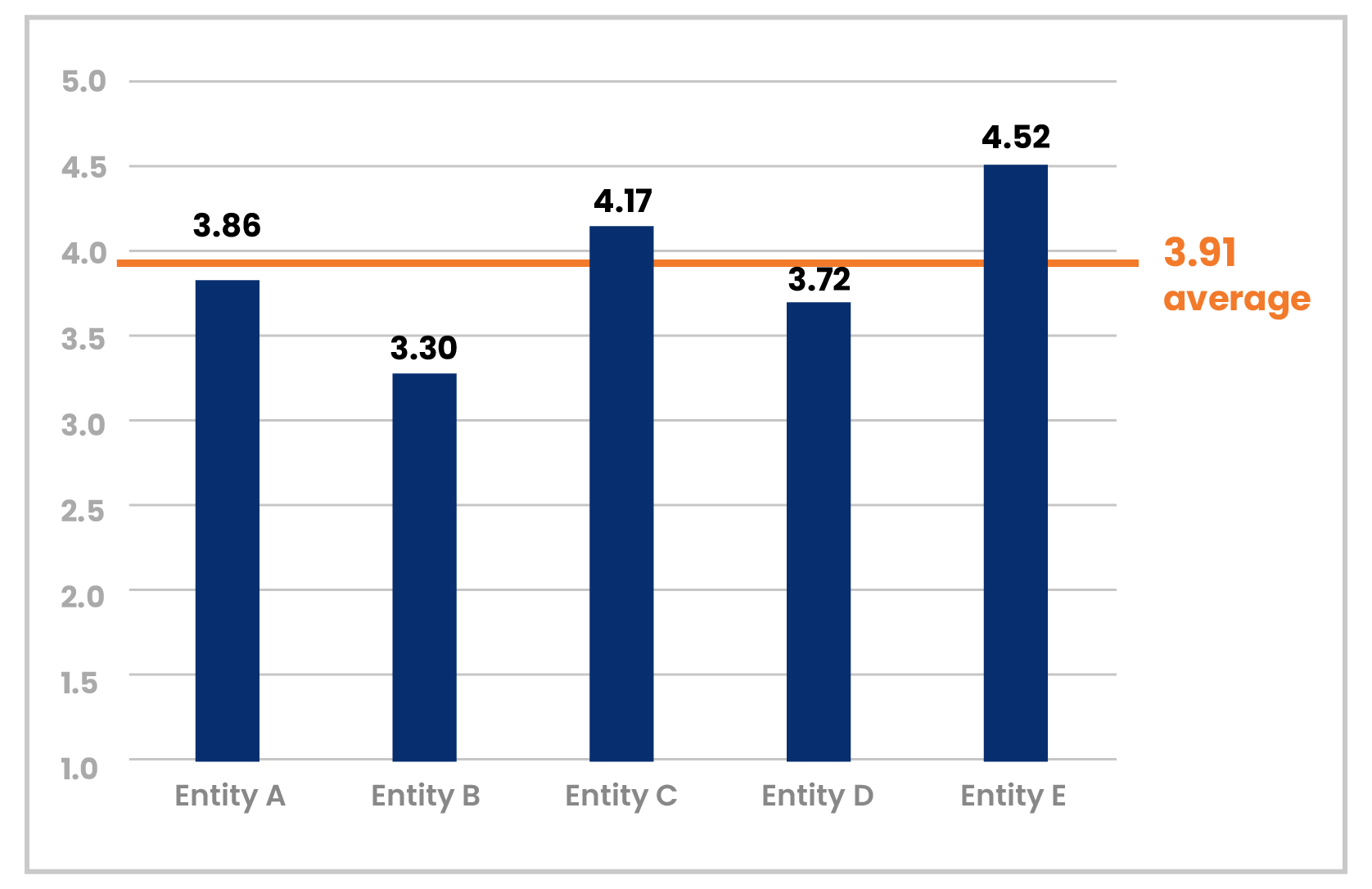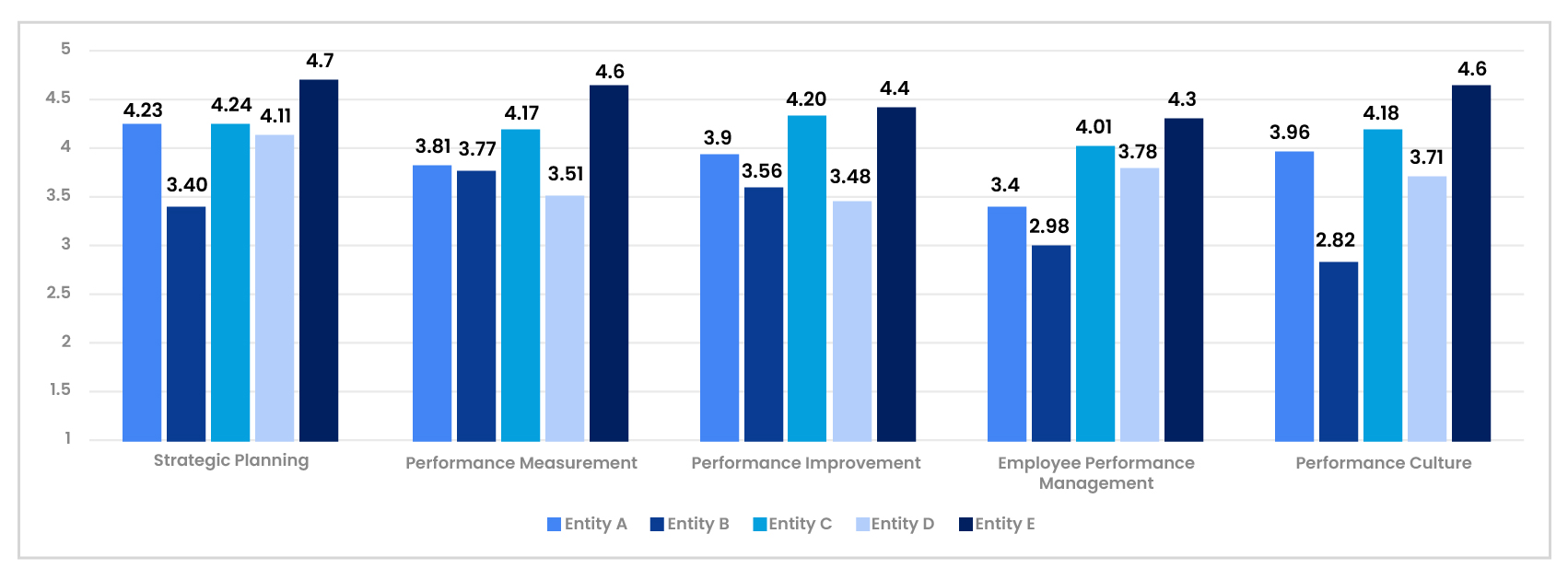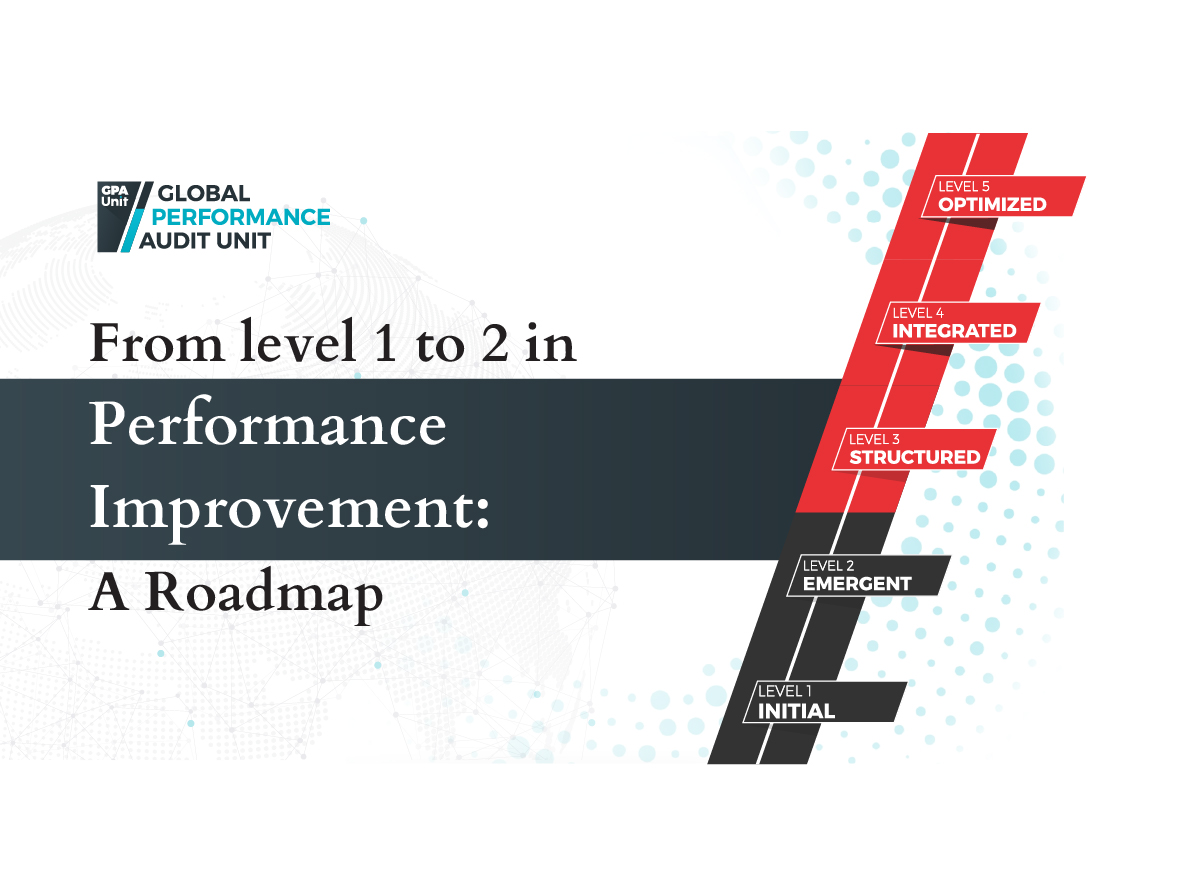Lessons from Saudi Arabia: What We Learned About Performance Management Maturity in Public Institutions

Since the launch of Vision 2030, Saudi Arabia has prioritized performance management as a cornerstone of public sector transformation. Through the National Center for Performance Measurement (ADAA), the country has institutionalized performance monitoring to enhance transparency, accountability, excellence and strategic alignment in public institutions. More than just implementing performance measurement tools, Saudi institutions are fostering the power of system thinking in designing and maintaining performance management systems through which strategic planning, operations, and human capital development work in unison to achieve national objectives.
The power of integration in Saudi Arabia’s public institutions
To achieve Vision 2030’s ambitious goals, Saudi Arabia is ensuring that performance management is fully integrated across strategy, operations, and human capital development. Two key initiatives drive this effort:
The King Salman Program for Human Capital Development embeds performance management into workforce development, ensuring that public sector employees are not only evaluated but actively trained and supported in aligning their efforts with national objectives. By requiring all government entities to adopt best practices in human capital management, the program ensures that performance standards are not isolated metrics but part of a continuous improvement cycle.
At the institutional level, the National Center for Performance Measurement (ADAA) plays a critical role in standardizing and integrating performance measurement across government entities. By using unified tools and models, ADAA ensures that public sector organizations operate within a consistent performance framework, linking strategic goals with execution. Its quarterly progress reports further reinforce integration by aligning KPI tracking, strategic initiatives, and beneficiary satisfaction measures into a cohesive system.
Through these efforts, Saudi Arabia is embedding performance management as a fundamental enabler of public sector transformation, ensuring that measurement, strategy, and execution work as a single, integrated system.
How Saudi institutions are advancing performance management system maturity
To understand how Saudi institutions are progressing in their performance management journey, we examined five public sector entities that participated in the GPA Unit’s comprehensive performance management system maturity assessment. To ensure a diverse representation of public sector performance management maturity, five governmental entities from different industries, and with different sizes, were selected for this assessment. While the broader portfolio of assessments within GPA Unit includes other institutions—including two that have achieved the highest maturity level (Optimized)—this study focused on a subset that best exemplifies industry variation and allows for comparative insights. The selected entities provide a balanced cross-section of public sector organizations at different stages of performance management maturity, offering valuable lessons applicable to a wide range of institutions.
The evaluation followed a structured methodology, including document analysis, perception surveys, and interviews, ensuring a holistic assessment of each entity’s performance management system. By looking at five core capabilities—strategic planning, performance measurement, performance improvement, employee performance management, and performance culture—the assessment provided a detailed view of strengths, gaps, and opportunities for growth. The organizations were assessed against a set of best practices and through rigorous analysis were allocated an overall maturity score ranging from 1 to 5.
The findings offer valuable lessons for other institutions seeking to enhance their performance management system maturity and demonstrate the tangible benefits of adopting a structured, research-based approach.
General findings
The assessment results highlight Saudi Arabia’s strong commitment to advancing performance management excellence, with most evaluated institutions achieving Level IV (Integrated). This demonstrates that performance management is not just a compliance exercise but an actively embedded practice that supports strategic decision-making and operational efficiency. Notably, one institution has reached Level V (Optimized), serving as a benchmark for best practices and showcasing what is possible when performance systems are fully integrated and continuously refined. Even the institution at Level III (Structured) is on the brink of advancement, reflecting a trajectory of continuous progress.

Overall maturity scores per entity
Strengths in performance management system maturity: what Saudi institutions are excelling at

Maturity scores per capability per entity
Clear vision and strong alignment
Saudi institutions demonstrated high maturity in strategic planning, with most entities excelling in strategy envisioning—ensuring that mission, vision, and corporate values are clearly defined and effectively embedded in governance structures. Organizations also successfully utilize structured tools such as strategy maps, scorecards, and dashboards, reinforcing a systematic approach to goal-setting and execution at the corporate level.
Well-defined targets and data utilization
The key strengths in the performance measurement capability showed up particularly in target setting, data collection, and data visualization. Institutions have established robust mechanisms for defining performance expectations and tracking progress, ensuring that data-driven insights support strategic decisions.
Strong project and reporting practices
The Saudi institutions involved in these maturity assessments excel in managing strategic initiatives, with well-structured processes for overseeing corporate projects that support strategy execution. Additionally, performance reporting is well-integrated, ensuring that progress is consistently monitored and informed by reliable data.
Clear governance structures
The institutions have successfully established governance structures that integrate employee performance management into broader corporate strategy. This ensures that performance expectations are well-defined and consistently applied across teams, supporting alignment with organizational goals.
Investment in learning and employee well-being
The institutions are actively fostering a strong performance culture, with a notable focus on learning, leadership development, and employee well-being. The education and knowledge dimension scored the highest, reflecting a commitment to upskilling employees and promoting knowledge-sharing environments. Institutions also prioritize workplace satisfaction, reinforcing their dedication to maintaining a motivated and engaged workforce.
A model for the future
The findings of these maturity assessments confirm that Saudi Arabia’s performance management efforts are yielding tangible results, with integrated systems, structured execution, and a focus on human capital development driving progress. While there are opportunities to further refine governance, operational alignment, and employee performance processes, the current trajectory of continuous enhancement reflects a strong commitment to Vision 2030’s ambitious goals. As more institutions embrace structured maturity assessments, Saudi Arabia will continue to set the standard for efficient, transparent, and strategically driven public sector management, reinforcing its position as a regional leader in performance excellence.
| DATE | May 05th, 2025 |
| Category | Blog Posts |
| Reading Time | 6 |




